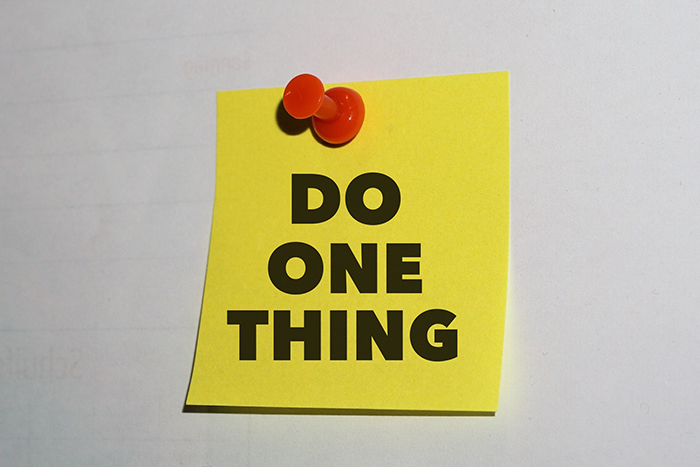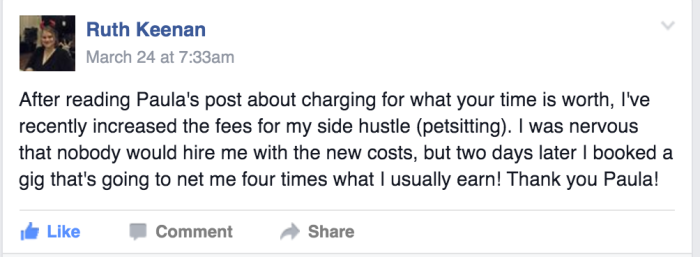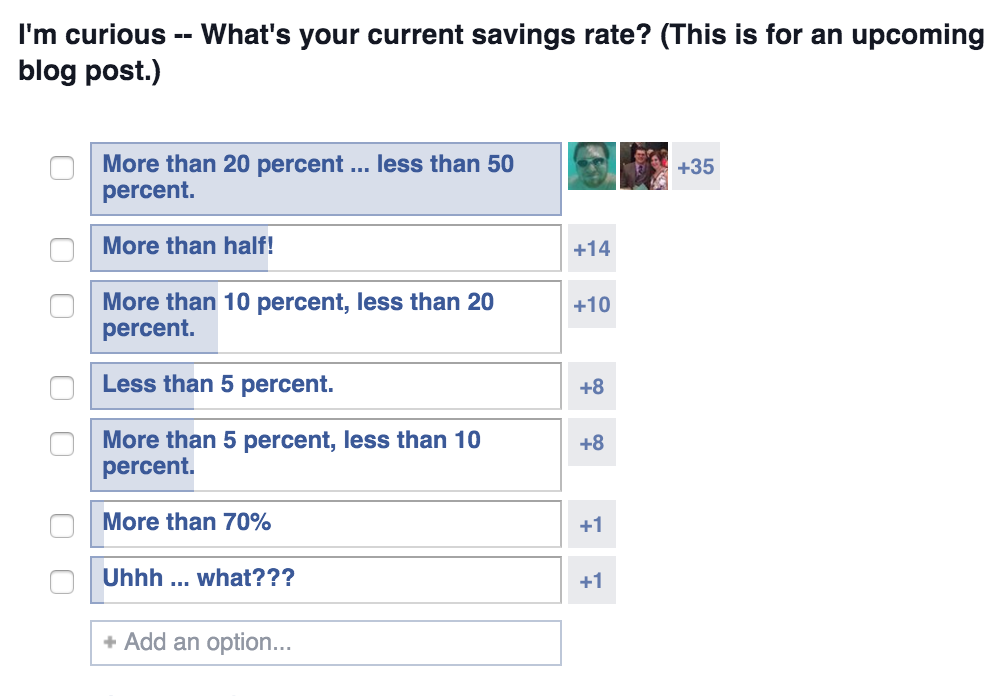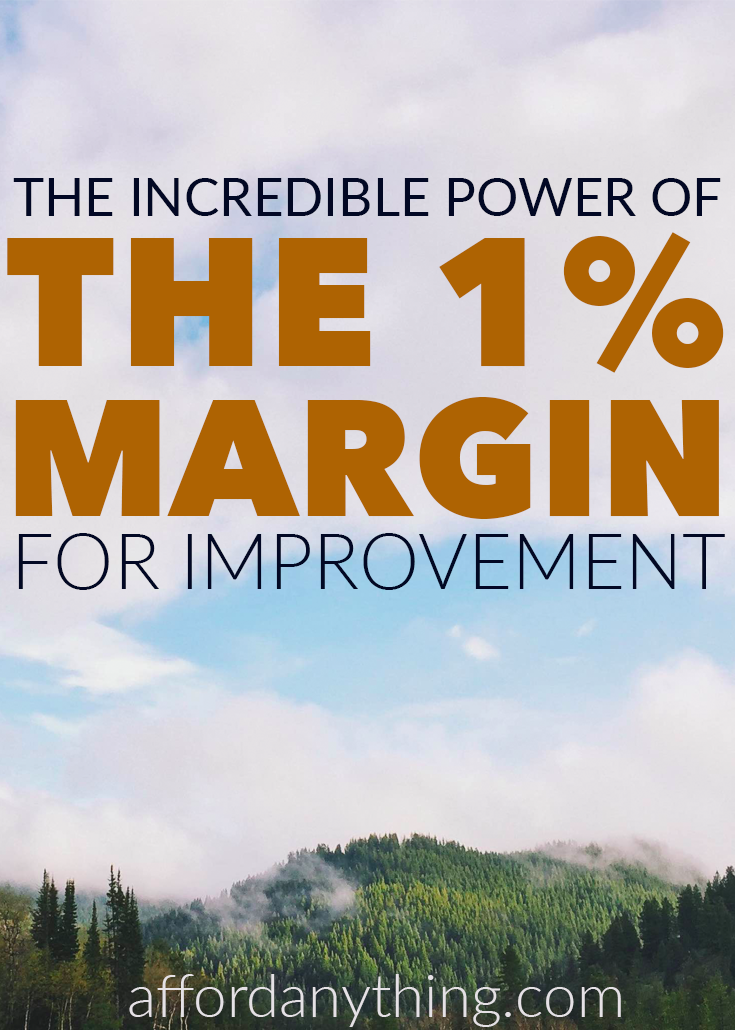
Another month is over. Your bills have arrived.
You settle down on the couch, scanning through your statements. Sheesh. It happened. You’ve spent more money than you intended. Again.
You made a resolution. Maybe for New Year’s. Maybe on your birthday. Maybe on any random day of the year. You promised yourself that THIS time, things will be different.
This year would be the year that you pay off your debt. Hit your savings target. Buy that first rental property. Open that retirement account. Start a side business. Boost your income.
But the only thing that’s happened is that you’re a little older. Nothing else changed. Despite all your determination, despite all your good intentions, you’re in the same spot now as you were six months ago.
What gives?
One Percent Margin for Improvement
The British Cycling team used to feel the same way.
Every year, the team tried to win the Tour de France. Every year, they failed. This pattern repeated over, and over, and over again — spanning generations. Lifetimes.
The team competed for 76 years. They lost every time.
In 2012, their fate transformed. A British cyclist won the Tour de France. Another British teammate placed second. And for dessert, the team took home 8 gold medals at the London Olympics that same year.
I’ll ask again: What gives?
Their path to victory started a decade earlier, when Dave Brailsford took over as the team’s manager and performance director.
Brailsford believes in the theory of “the 1 percent margin for improvement,” also known as “the aggregation of marginal gains.” He applied this to every aspect of the team members lives.
He started with the obvious: seat ergonomics, wheel weight, athlete nutrition.
He placed the cyclists in a wind tunnel and found minor improvements in aerodynamic technique. He saw that dust was affecting tires and gears, so he painted the floor white to aid the cleaning staff.
He found the most restful mattresses and pillows and transported these to hotels during team travels. He hired a surgeon to teach the athletes about proper hand-washing techniques. He found the most effective massage gel. He became precise about food preparation; one of his athletes carries his own espresso maker to hotels so he can brew the perfect cup before competition.
“We searched for small improvements everywhere,” Brailsford told the Harvard Business Review. “Forget about perfection; focus on progression.”
Micro-Progress in Your Life
You might not need to focus on the ergonomics of your bicycle, like Brailsford did.
But you can use his approach to make micro-progress towards your goals.
Want to invest in your first rental property? Take tiny steps to prepare yourself. Read one article per day. Increase your savings (or income) by small amounts as you build a down payment fund. Spend an hour per week looking at price-to-rent values of various neighborhoods.
Likewise, get better sleep. Eat clean. Exercise. These affect your focus, concentration and productivity.
Brailsford isn’t the only person who tested this idea. The incredible story of micro-progress traces back to the 1830’s ….

One Percent: Chess
Wilhelm Steinitz was a fierce competitor.
The youngest of 13 children born into a poor family in 1830’s Prague, Steinitz learned chess at age 12 and began competing in his twenties after moving to Vienna.
He distinguished himself as the best chess player in Austria, and then went on to become the first undisputed World Champion of Chess.
He attributes his success to “an accumulation of small advantages.”
“I was champion for 28 years, because … I played on certain principles which neither [my biggest rival] nor anyone else of his time understood,” he wrote.
His chess championship streak was the most famous use of marginal gains theory in his day.
One Percent: Business
Massachusetts-based UX/UI design company Fresh Tilled Soil harnessed marginal gains theory to improve every aspect of employee performance and satisfaction on their 30-person team.
They moved into a modern office space with large windows and skylights, reasoning that natural sunlight boosts productivity. They replaced office junk food with healthier snacks. They filtered out ‘junk leads’ so they could focus sales efforts on qualified leads. They optimized their website for search and referral traffic. During staff meetings, they connected the company’s mission to its day-to-day actions.
The result? “We doubled our revenues with a net gain of one new team member,” CEO Richard Banfield wrote.
Twice as much income. Nearly the same expenses.

One Percent: Savings
I invoked the idea of marginal gains last year, when I issued the One Percent Challenge.
This challenge dares you to boost your savings rate by one percent per month. To calculate this, just move the decimal point two places left:
- If you earn $2,000 per month, 1 percent is $20
- If you earn $4,000 per month, 1 percent is $40
- If you earn $6,000 per month, 1 percent is $60
- If you earn $8,000 per month, 1 percent is $80
I say “save” as a shorthand for anything that improves your net worth, including:
- Tackling debt (beyond the minimum)
- Real estate down payments
- Retirement contributions
The idea? If you boost your savings one additional percent every month, by next year you’ll save 12 percent of your income more than you do today.
You can customize this in whatever way fits you best. Some people take HUGE leaps, saving 5 or 10 percent in one gigantic move. Others take smaller steps, saving an additional one percent every 2-3 months (which adds up to an extra 4-6 percent of your income per year).
Some apply the idea behind the One Percent Challenge to earning more. One Challenger increased her rates in her side business and now earns 4x more.

I initially thought this would be a one-year challenge, but it’s thriving as a rolling, evergreen concept. Anyone can join, anytime, and stay for as long as the challenge serves them.
The typical Challenger saves more than 20 percent of his or her income, which is awesome.

(UPDATE: Our Facebook community has transformed into a great place to exchange ideas on a variety of topics, not just saving money. Join us if you’d like to connect with others on the financial independence journey.)
One Percent: Across Life
I first learned the marginal gains idea when Zen Habits author Leo Babuta suggested developing new habits through incremental gains.
Want to start jogging? Jog for one minute per day, he recommended.
Yes, it will feel silly to lace up your running shoes, break into a one-minute jog, and stop.
“That seems so ridiculous most people laugh,” he says.
But this helps you develop the habit of jogging everyday. Starting is the hardest part. You can adjust the amount later.
Leo applies this concept to any type of behavior change. Want to start flossing? Floss one tooth. Meditation? One or two minutes. Writing? One sentence. Pushups? (You get the idea.)
I decided this made sense.
I realized that if I run for one minute a day, and increase this by an additional minute every three days, I’ll be completing one-hour runs within six months.
This concept was the inspiration for the One Percent Challenge.

One Percent: Learning
I recently stumbled across this concept again while researching effective teaching techniques.
One of our biggest priorities for our real estate investment course is to design the material in a way that produces results, rather than just presents information.
In service of that goal, I spend a lot of time studying the learning process — learning how humans learn.
Among other concepts, I research how to:
- Ask a mix of clarifying, probing and leading questions.
- Offer unobtrusive feedback.
- Seek out confusing parts. Who’s feeling stuck? What’s preventing forward momentum?
- Foster a sense of competence, independence and belonging. (This is called the “3A’s:” agency, autonomy and affiliation.)
Sounds great, but this is vague and unspecific. How do I apply these ideas into the material?
The answer: marginal gains.
Can I rephrase one question? Can I create one more ‘cliffhanger’ within the talk? Can I ask students to articulate one thing they expect to achieve at the end of each lesson?
If I make one tweak or improvement everyday, within four months, I’ll have made more than 100 enhancements. That’s the difference between “good” and “great.”
I’m blown away by how much small changes add up over time.
(If you want to learn more about Your First Rental Property, our premier real estate investing course, sign up to our VIP list here.)

One Percent … and the Big Picture
There’s one critical clarification I want to make about marginal gains theory.
Some people interpret this as “the theory of sweating the small stuff.” Worry about minutia. Tweak around the fringes.
This seems to contradict a different line of thinking that you should ruthlessly prioritize, focusing only on the “big wins.”
Your time and energy is limited, so don’t waste it chasing pennies. Don’t clip coupons or make your own laundry soap, when you could instead spend your precious time focusing on larger gains.
How can you possibly pursue marginal gains AND limit your focus to big wins? Don’t these two ideas live in opposition?
That’s a fantastic question. Since I’m a nerd, I decided to dig deep to find the answer. Clarity came from a Brailsford interview:
“Interestingly, when we moved from the track to the Tour de France, we didn’t get it right at all; our first few races were well below expectation. We took an honest look and realized that we had focused on the peas, not the steak.
“We tried so hard with all the bells and whistles of marginal gains that our focus was too much on the periphery and not on the core.
“You have to identify the critical success factors and ensure they are in place, and then focus your improvements around them. That was a harsh lesson.”
Boom. That says it all.

The theory of ruthless prioritization — which states that our mental bandwidth is limited, so focus only on the few things that matter — provides a target. It tells us where to aim our arrow.
The theory of marginal gains tells us how to hit that target. It’s the forward trajectory of that arrow as it soars through the air, one inch at a time.
Prioritization is the “what.” Marginal gains is the “how.”
I’ll use myself as an example:
There’s no shortage of opportunities to optimize areas of my life. I could:
- Dive into the travel hacking scene.
- Learn another language.
- Take up a musical instrument.
- Start lifting weights.
- Become a better cook.
- Spend more time connecting with old friends.
- Expand my consulting business and bring on more clients.
- Grow the Afford Anything movement.
- Build my rental property portfolio.
The problem is that you and I can do anything, but not everything … just as we can afford anything, but not everything.
Through ruthless prioritization, I chose a few goals that are at the core of my life’s vision.
Then within the goals that I chose, I create a daily habit of marginal gains.
One Percent Gains in Your Life
Maybe you’re trying to earn side income, start investing, or grow the gap between your earnings and expenses. Maybe you’re wrestling with a career decision. Or maybe you’re trying to get healthier.
There are a million goals you could reach. But there are probably only a small few that truly deserve your care and attention.
Choose those goals wisely. Ruthlessly. Deliberately.
Once you’ve chosen your targets, make incremental progress a daily habit. Send one email to a potential client daily. Read one article per day about investing. Save one percent more money than you did last month.
One percent improvements create champions over time.
